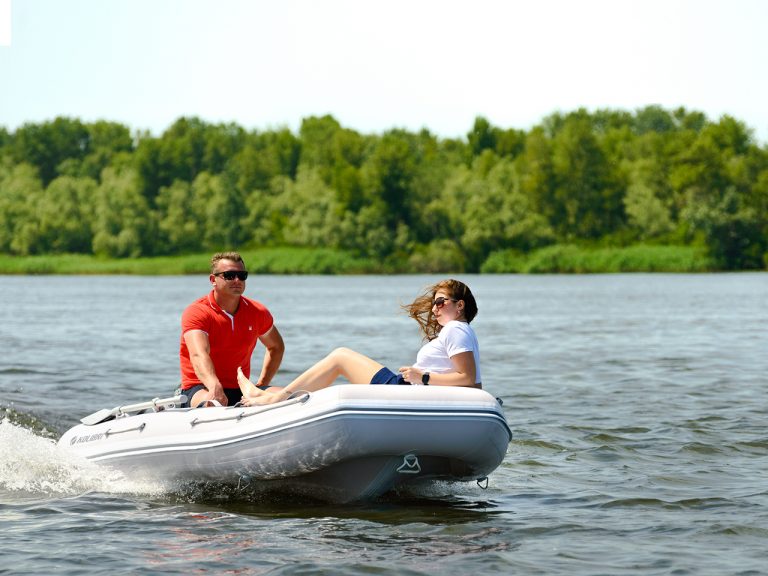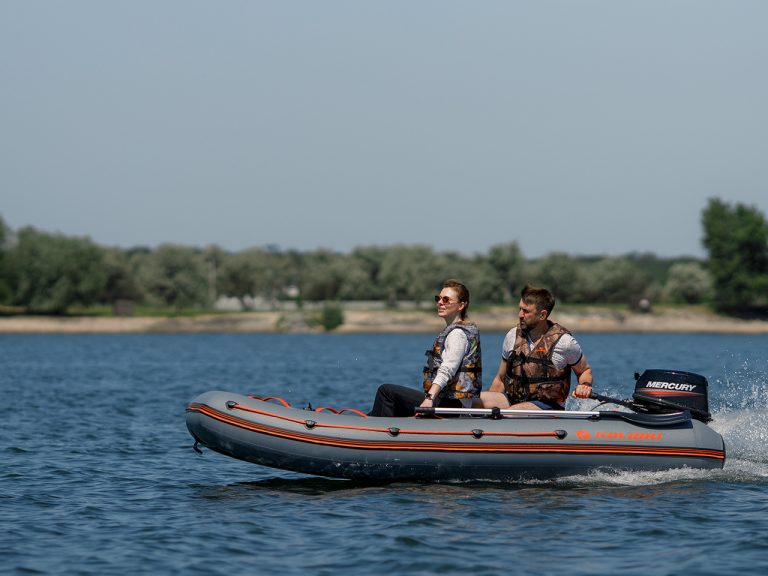PVC Boats — main features, advantages and disadvantages
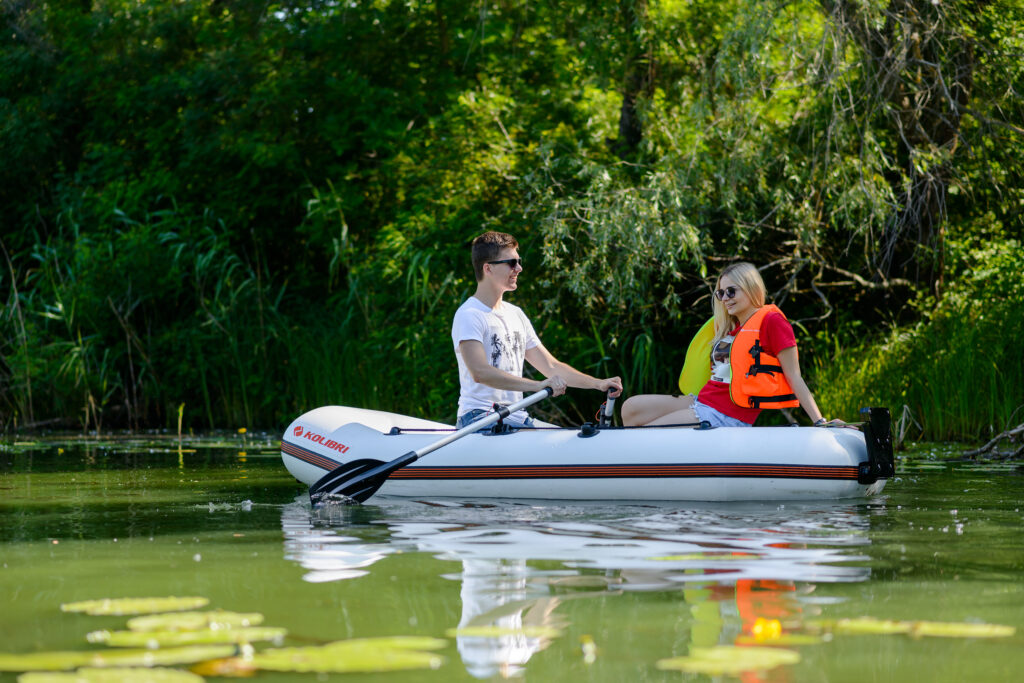
PVC boats are inflatable boats, the elastic hull of it is made of a special polymeric material. The main distinguishing feature of PVC boats is a light inflatable hull, and it has both advantages and disadvantages. These things and much more will be discussed in this article.
So, how do PVC boats differ from other boats?
Advantages
PVC inflatable boats have the main undeniable advantage over rigid boats – lightness and mobility. When folded, they can be transported in the trunk of a car or carried in a special bag or backpack. And an inflated, fully equipped PVC boat can be carried by 1-2 people over a short distance. The flat bottom of the PVC inflatable boat even in the presence of an inflatable keel makes such boats passable in any shallow water.
PVC boat does not need a permanent place of storage or parking at the berth, it can be easily stored in the garage, on the balcony or in the country-house. Small models can be stored in a bag in a city apartment. Although, it is better to keep the inflatable boat slightly inflated.
The advantages of PVC boats include their price, which is usually lower than the price of rigid boats. Inflatable boats do not require registration for lengths up to 4 meters and motor power up to 10 hp.
Disadvantages
The main disadvantage of PVC boats is the vulnerability of the hull. Hull material can be damaged by snags, ice and other sharp objects, burned (if the boat is parked close to a fire), punctured or damaged during fishing or hunting. However, the maintainability of PVC fabric allows you to seal the damaged area quickly with a standard repair kit. In addition, modern PVC fabric is not so easy to break.
What are PVC boats made of?
The material used by the vast majority of manufacturers of inflatable boats is multilayer polyvinyl chloride or PVC, reinforced for strength with a mesh of polyester threads. This is a synthetic polymer fabric, it is much superior to rubber in its performance properties. PVC is resistant to motor oils and gasoline, has high wear resistance and is not prone to rot or ultraviolet radiation, which is especially critical in the summer in open water.
There is also non-reinforced PVC material, it is cheaper and inferior in strength to reinforced. There are boats made of awning fabric or rubber. They are the lowest in quality and price. They are not considered in this article.
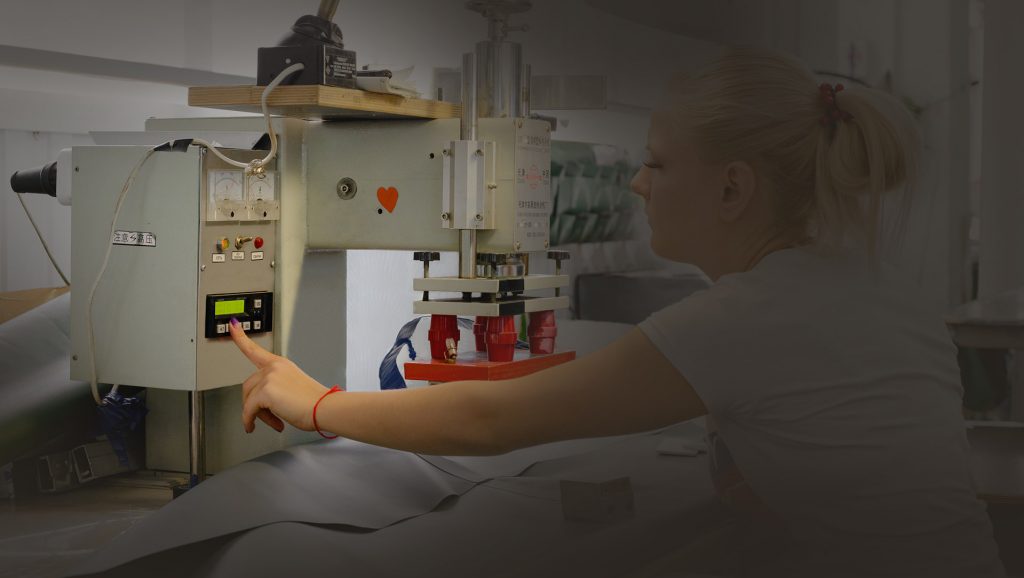
PVC density
PVC fabric has different density, regardless of the number of layers in the fabric structure. In most common models of boats from different manufacturers, the density of PVC material is standard. High-density PVC is significantly more expensive, it is used only in certain models of boats for extreme conditions – lifeboats, arctic conditions, military use, etc. In addition, the denser material makes the boat heavy and expensive. For most cases of tourist or fishing purposes, boats made of high quality PVC do not make much sense.
Boat hull
The hull of any inflatable boat consists of inflatable tubes (they can have several independent sections), the bottom (it can be strengthened by a rigid floorboard, slatted laminated deck or an inflatable flooring air-deck of a high pressure), a stern transom (from plywood or aluminum, for motor models), inflatable keel (for motor models).
Tubes
The boat hull consists of inflatable tubes-boards. The tubes are inflated with a pump, they have overpressure valves to equalize the pressure. The tubes in the inflatable boat is divided into airtight sections, which gives the vessel reliability and in some sense even unsinkability in the event of failure of one of the sections.
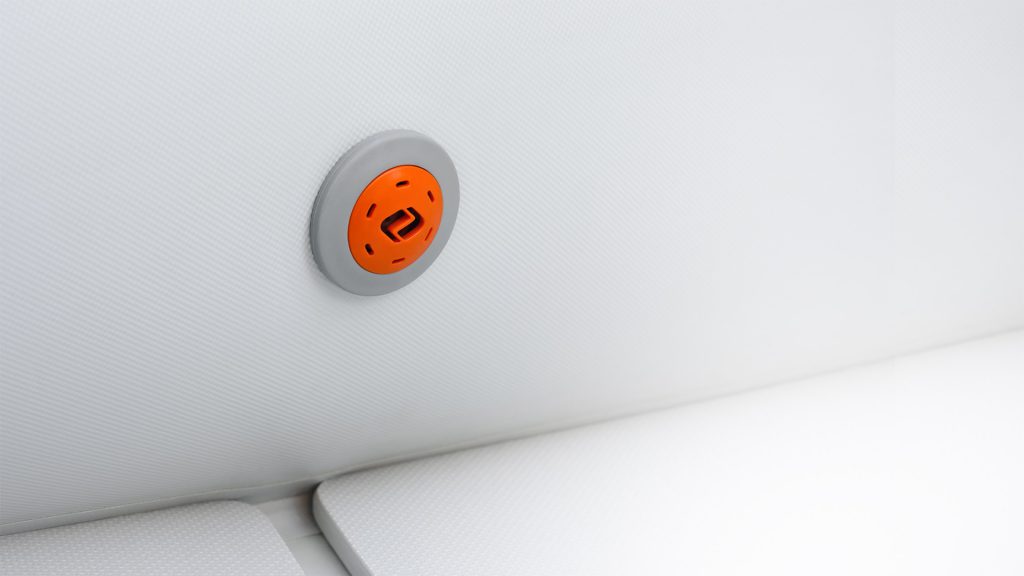
Bottom
The bottom of inflatable boats is often flat, it is a single layer of PVC material attached to the perimeter between the tubes. It is reinforced with a special removable deck – it can be a slatted laminated deck made of slats of moisture-resistant film faced plywood, a folding flooring (sole-book) or aluminum flooring with the stringers for greater rigidity. There are also inflatable flooring of high pressure – Air-deck. The rigid deck gives the boat hull stability, makes its use safer and more functional – the bottom deck does not slip, it is convenient when you focus on it with your feet while rowing.
Transom
In addition to the closed perimeter PVC hull, some inflatable boats have a rigid transom for mounting the outboard motor. The transom is attached symmetrically and without skew to the PVC fabric in the stern of the boat. The transom is aluminum or moisture-resistant film faced plywood.
Keel
Motor inflatable boats are equipped with inflatable keel. It serves to add stability to the vessel at speed.
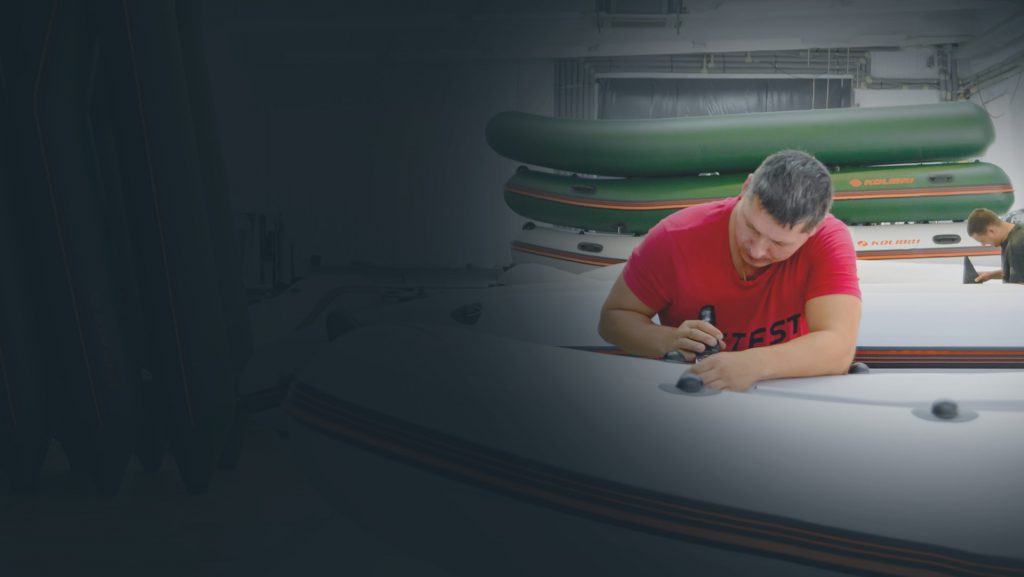
Inflatable Boats: A Closer Look at Materials, Pros, and Cons
Inflatable boats, renowned for their versatility and portability, are a popular choice for various water activities. Whether you’re into fishing, leisurely boating, or water sports, inflatable boats offer a unique set of advantages and inflatable boat disadvantages. Let’s dive into what makes these boats tick.
What Are Inflatable Boats Made Of?
The primary material used in the construction of inflatable boats is synthetic polymer fabric, most commonly polyvinyl chloride (PVC). This PVC material is reinforced with a mesh of polyester threads for added strength. PVC is favored for its durability, resistance to wear and tear, and ability to withstand exposure to motor oils, gasoline, and the sun’s ultraviolet rays. This combination of materials makes inflatable boats lightweight and versatile.
Pros and cons of inflatable boats
Pros of Inflatable Boats
Portability: One of the standout features of inflatable boats is their portability. When deflated, they can easily fit into the trunk of a car or be stored in a compact bag, making them perfect for adventurers on the go.
Versatility: Inflatable boats can handle various water conditions, from calm lakes to flowing rivers and even mild coastal waters. Their adaptability makes them suitable for diverse water activities, such as fishing, leisure boating, and water sports.
Affordability: Inflatable boats are often more budget-friendly than rigid-hulled boats, both in terms of the initial purchase and maintenance costs.
Ease of Storage: These boats don’t require dedicated storage space or a berth at a marina. They can be stowed away in a garage, on a balcony, or even in a city apartment.
Cons of Inflatable Boats
Vulnerability to Damage: While modern PVC inflatable boat material is durable, it’s not impervious to sharp objects, such as rocks or snags. Punctures or tears in the fabric can occur, but many damages can be repaired with a standard repair kit.
Lack of Rigid Structure: Inflatable boats can lack the rigid structure of traditional boats, which can affect their stability and handling, especially at high speeds.
Less Load Capacity: Compared to some rigid-hulled boats, inflatable boats typically have a lower load capacity, limiting the number of passengers and cargo they can carry.
PVC Dinghies and Inflatable PVC Material
Inflatable boats often fall under the category of PVC dinghies due to their construction from PVC material. These boats are designed to be lightweight, easy to transport, and suitable for a variety of water activities.
How Are Inflatable Boats Made?
In the manufacturing process, layers of boat pvc material are fused together and reinforced with polyester threads. The result is a strong yet flexible material that can withstand the rigors of boating. The fabric is then shaped into the boat’s hull, with specific sections for tubes, a flat bottom, a transom for motor mounting, and optional features like an inflatable keel.
Rubber Boats vs. PVC Boats
Inflatable boats made from rubber are less common today, with PVC being the preferred material. PVC offers improved durability and performance compared to rubber. While rubber boats were once popular, their vulnerability to degradation from UV exposure and a shorter lifespan have led to PVC’s widespread adoption.
In conclusion, inflatable boats made from PVC material have become a go-to choice for water enthusiasts worldwide. Their combination of portability, versatility, and affordability makes them an attractive option for various water adventures, despite some inherent vulnerabilities.
Conclusions
So, we found out what a PVC inflatable boat is, how it differs from a traditional rigid boat, we considered the advantages, and mentioned the disadvantages.
You can read about choosing a specific boat for your needs in our other article “How to choose an inflatable boat: 6 advices”, which describes in detail the evaluation criteria for different models of rowing and motor boats for fishing or boat trips.



